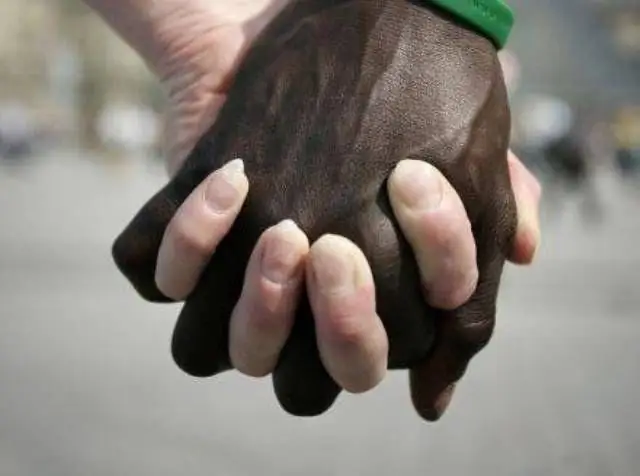- Author Antonio Harrison [email protected].
- Public 2023-12-16 07:44.
- Last modified 2025-01-22 21:44.
The issue of racial and national differences has at all times occupied the minds of many people, but its solution took a variety of forms: from restrained nationalism to aggressive racism and the policy of apartheid.

Ideology and worldview
Nationalism in the traditional sense is an ideology that asserts that the nation is the most important value in the state, since it is the highest level of social unification. There is nothing wrong with nationalism of this type, since it only pursues the goal of forming a strong state based on the unity of the nation, the priority of its interests, the value of its history and culture.
Unfortunately, in modern language, the concept of "nationalism" is increasingly confused with chauvinism or xenophobia, which are characterized by an aggressive attitude towards representatives of other nations. In fact, intolerance towards other nationalities is not at all a mandatory sign of nationalism.
While nationalism is an ideology, racism is rather a worldview, the main feature of which is the idea of the superiority of one race over others. This superiority can relate to cultural development, intellectual or physical abilities of members of a race, moral values and moral standards. A characteristic feature of racism is the statement that the races of people were originally divided into superior and inferior.
Apartheid politics
With regard to apartheid, then, unlike the two previous concepts, this word is not called an abstract ideology or a set of views, but concrete actions carried out in South Africa in the period from 1948 to 1994. The term "apartheid" in translation from one of the African languages means "division". This was the name of a set of measures to create a system for the separation of white and black residents of the country, adopted by the South African government.
During apartheid, the indigenous population of South Africa was forcibly displaced on reservations, the total size of which was only 30% of the territory originally occupied by blacks. The rest of the country was supposed to belong to the white race. However, the policy of apartheid was not limited to the creation of reservations.
Many laws have been passed that in one way or another infringed upon the rights of blacks, such as the law prohibiting mixed marriages, the law on education, the law on the provision of separate services, and even a provision that officially allowed discrimination on the basis of race in employment. For many years, the United Nations has fought against the South African government, trying to convince him to abandon the policy of apartheid, but this was done only in 1994 under the influence of numerous sanctions and changes in world trends.






